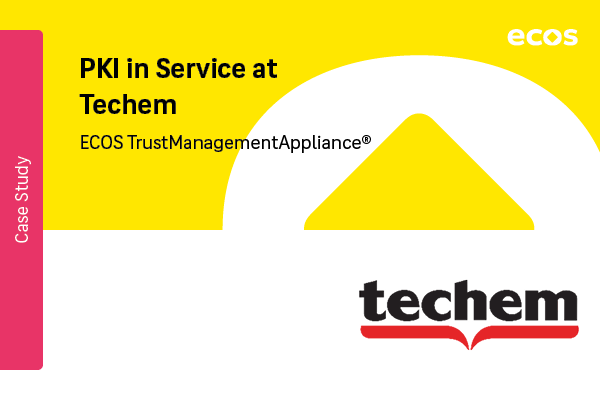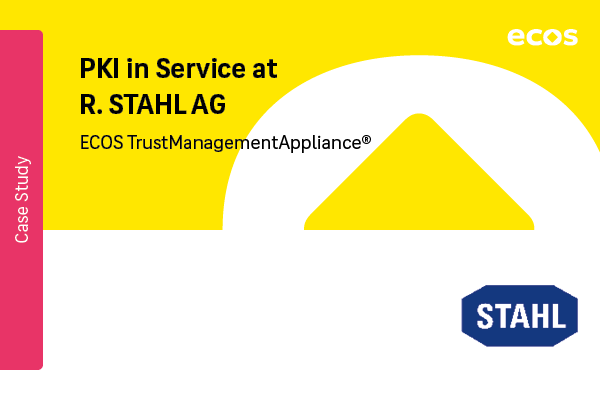PKI management for IoT, OT and AI – secure identities for a connected future
Millions of devices, sensors and controllers are deployed across IoT and OT environments – and each of them requires a unique, trusted identity. At the same time, AI agents are taking on increasingly autonomous roles and must be authenticated beyond doubt. Only then can Zero Trust principles be applied consistently across connected systems.
The ECOS TrustManagementAppliance® (TMA) provides a powerful, proven and flexible PKI and key management solution for creating, distributing and managing digital certificates and cryptographic keys – the foundation of machine identities.
Optimized for IoT and OT environments, and extendable via the TMA Edge Gateway, it also supports distributed production networks and complex global infrastructures.
- Automated creation, management and distribution of certificates and keys.
- Certificate lifecycle management – automatic renewal and full lifecycle transparency.
- Seamless production integration – certificate issuance directly within manufacturing processes, customizable for different environments.
- Fully scalable – suitable for any product strategy, from pilot runs to millions of devices.
- Open interfaces and standard protocols – REST API, SCEP, EST, ACME, CMP for smooth integration with existing systems.
- Compliant and future-ready – supports X.509, symmetric/asymmetric keys, TLS-based communication (MQTT, OPC UA, HTTPS).
- Crypto-agile architecture – prepared for future cryptographic standards.
- Flexible deployment – on-premises, cloud, hybrid or edge; supports offline production environments.
- Trusted identities for AI agents – authenticate autonomous systems, prevent manipulation and enable seamless integration into Zero Trust architectures.
- Secure digital identities form the foundation of sustainable product, device and industrial cybersecurity strategies.
ECOS TrustManagementAppliance®
Trusted identities for IoT, OT and AI
The ECOS TrustManagementAppliance® creates, distributes and manages digital certificates and cryptographic keys to establish trusted identities for devices, systems and AI agents.
These secure machine identities protect data, processes and autonomous decisions – forming the basis of a secure, scalable and future-proof industrial ecosystem.
The TMA can be operated on-premises, in the cloud or as a service by ECOS.
from a single source
Optionally highly available
- Creating, renewing, revoking certificates
- Certificates, secrets and symmetric keys
- Key length and signature algorithm fully configurable
- Metadata are freely definable and assignable
- Automatic certificate renewal
- Certificate classification and structuring
- Automated certificate enrollment (basis via SCEP)
- Automatable certificate renewal (basis via SCEP)
- Coupling with AD and other metadirectories
- Control and configurability of all functions via REST API
- Integration into existing PKI as sub or root CA
- Cluster operation, also cross-site
- Multilevel root- and sub-CAs
- Import interface for public and private certificates
- SNMP interface for connection of a monitoring system
- syslog interface for connection of a aggregation tool
- Virtual appliance for operation with VMware, Microsoft Hyper-V or other virtualization solutions
- Preconfigured ISO image with ECOS Secure Linux and TMA



